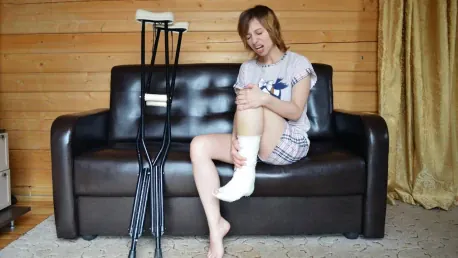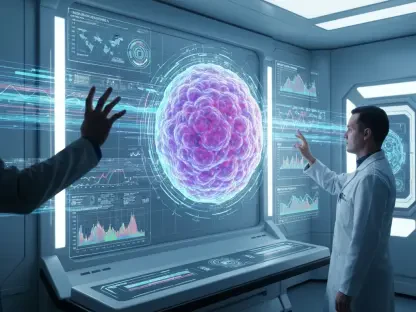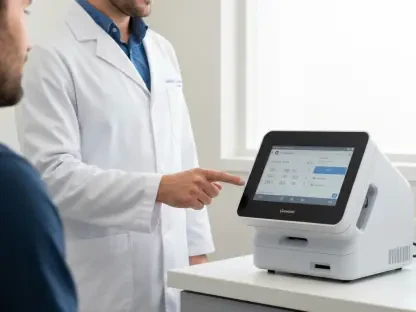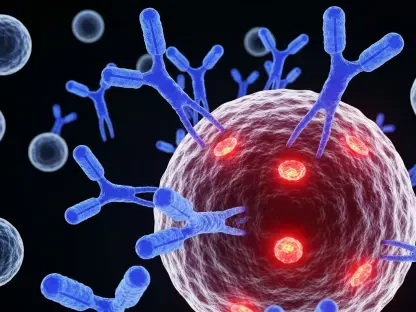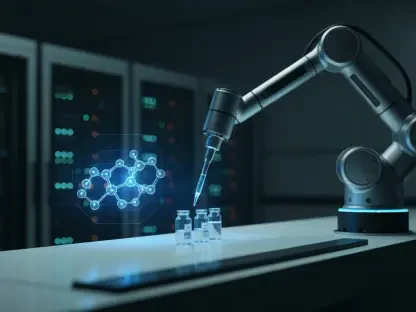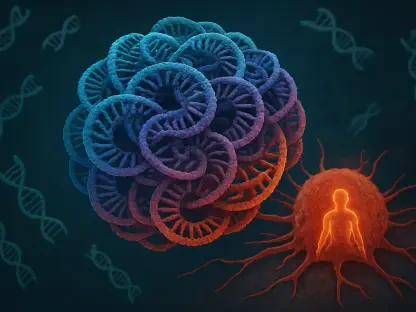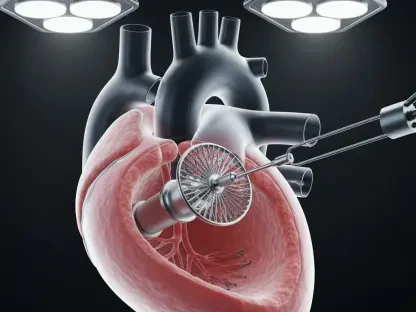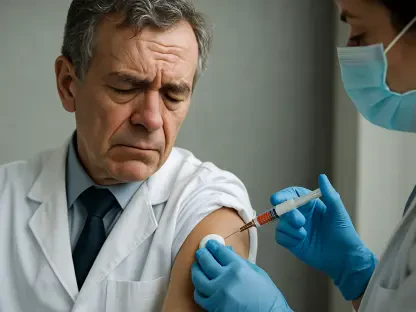The use of miniature implantable sensors in the field of bone injury recovery could mark a groundbreaking turn in medical advancements, as demonstrated by researchers at the University of Oregon’s Phil and Penny Knight Campus for Accelerating Scientific Impact. Developed through the collaborative efforts of Bob Guldberg, Nick Willett, and Keat Ghee Ong, this technology provides real-time data about injury sites, presenting valuable insights into the mechanical properties of healing bones. This novel method aims to optimize the recovery process from severe bone injuries, offering an unprecedented view that can tailor rehabilitation protocols to individual patients’ needs.
In a significant study, researchers applied this sensor technology to evaluate the success of a resistance-training rehabilitation program on femur injuries in rats. This study, partially financed by the Wu Tsai Human Performance Alliance and published on December 12 in the journal npj Regenerative Medicine, reveals notable progress in bone healing over an eight-week period. The real-time data from these sensors allowed detailed and continuous tracking of the bone repair process, which highlighted the potential for adjusting rehab methods based on continuous feedback. Should this technology be adapted for human application, it holds the promise of revolutionizing individualized rehabilitation by enabling clinicians to rigorously monitor recovery and fine-tune exercise regimens.
Real-Time Data Collection and Its Impact
The advent of these sensors has granted an unmatched glimpse into the bone healing process, offering the chance for detailed and ongoing data collection. If applied to human patients, this innovation could revolutionize personalized rehabilitation by enabling doctors to meticulously monitor healing progress and adjust exercise regimens in accordance with transmitted sensor data. This method aligns seamlessly with the well-established principle of the “Goldilocks” zone in post-injury recovery, which holds that too little or too much exercise can impede recovery, while the precise amount optimizes healing.
One of the pivotal findings of the study was the observed enhancement in bone recovery when resistance-training regimens were employed. Researchers used custom-built resistance exercise wheels, analogous to adjusting the incline on a treadmill, to simulate various mechanical environments for bone cells during recovery. Early bone healing signs were detected through the sensors in rats that underwent resistance training. By the culmination of the study, these rats exhibited denser bone tissue and mechanical properties such as torque and stiffness akin to uninjured bones. These remarkable observations underline the transformative potential of real-time data collection in revolutionizing the field of bone injury recovery.
Resistance Training as a Potent Recovery Method
The importance of these findings is underscored by the demonstration that resistance rehabilitation can significantly enhance bone formation and healing strength without the use of biological agents like Bone Morphogenetic Protein (BMP), commonly deployed to stimulate bone growth. This revelation implies that resistance training alone could serve as an effective, cost-efficient method for promoting bone recovery, potentially reducing reliance on costly biological supplements. The study further elucidates that cost-effective and easily accessible resistance training could be a powerful tool in the arsenal of rehabilitation techniques.
Despite the promising findings, the research acknowledged certain limitations, particularly the constant level of resistance all test animals faced during the rehabilitation period. Future investigations from the Guldberg lab aim to scrutinize the outcomes of varying rehabilitation intensities on bone regeneration over extended periods. This exploration could yield significant insights, enriching our understanding of optimizing rehabilitation protocols and further leveraging resistance training to maximize bone recovery effectively.
Potential for Human Application
Although the study was conducted on rodents, researchers remain optimistic about the potential of applying this technology to human patients with musculoskeletal injuries. Progressing towards this goal, Penderia Technologies, a Knight Campus start-up, is advancing enhancements to the implantable sensors. These enhancements include a battery-free design and wearable monitors, facilitating their use in clinical settings. Kylie Williams, the lead author of the study, is set to collaborate with Dr. Ong and the Penderia team upon her graduation to drive the clinical application of these sensors, moving ever closer to human trials.
The overarching research emphasizes the viability of early resistance rehabilitation as a formidable treatment. It highlights the potential to boost bone formation, actuate bone healing, and restore the mechanical properties of bones to their pre-injury robustness without necessarily depending on biological stimulants. The implications of these findings could potentially reshape the future of personalized rehabilitation and treatment for musculoskeletal injuries, presenting an optimistic forecast for refining individualized patient care.
Future Directions and Enhancements
The University of Oregon’s Phil and Penny Knight Campus for Accelerating Scientific Impact is pioneering a breakthrough in bone injury recovery with miniature implantable sensors. Researchers Bob Guldberg, Nick Willett, and Keat Ghee Ong developed this technology, which provides real-time data on injury sites, offering crucial insights into the mechanical properties of healing bones. This innovative approach aims to enhance recovery from severe bone injuries, allowing rehabilitation protocols to be tailored to each patient’s needs.
In a notable study, these sensors were used to evaluate the effectiveness of a resistance-training rehabilitation program on femur injuries in rats. The study, partly funded by the Wu Tsai Human Performance Alliance and published on December 12 in npj Regenerative Medicine, showed significant progress in bone healing over eight weeks. The sensors’ real-time data enabled continuous monitoring of bone repair, demonstrating the potential to modify rehab methods based on ongoing feedback. If adapted for human use, this technology could revolutionize personalized rehabilitation by allowing clinicians to closely track recovery and adjust exercises accordingly.
